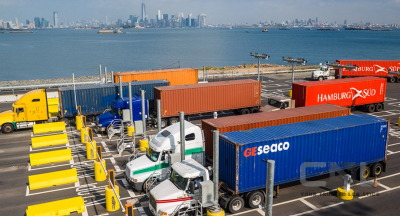Bill of lading (B/L) refers to bill of lading as a freight bill of lading, which is considered as a certification contract for the receipt of transported goods that the carrier confirms to the shipper and is a document for receiving goods at the destination port, especially in sea freight.

A shipper is a person shipper, exporter, or seller who will usually be charged for the freight.
A consignee is a consignee, importer, or purchaser who has the right to own or dispose of goods. Sometimes on the consignee entry it says "To order of XYZ bank ... Mr/Ms..." This means that this bill of lading is a signed bill of lading and the goods are only delivered when the individual/organization shown on this box signs the back of the word confirming the delivery.
Notify party is the notified person, which means that when the ship arrives, the person shown on this item will receive a cargo notification to the "Arrival notice". The person shown on this section does not have the right to dispose of the shipment
Booking no. is a series of numbers or digits intended for the carrier to track the booking number on the ship.
B/L no. (bill of lading no.) is the bill of lading number set by the carrier for convenience.
Export references are the number of exporters (customer codes).
Forwarding Agent references are agent codes, meaning where the consignee will bring the bill to receive the delivery order (D/O).
Point and Country of Origin: Where the bill of lading is issued.
Also Notify / Domestic Routing / Export instructions.
Pre-Carriage by: that is, there are means of transporting goods from the secondary port to the main port of departure that are suspected to be here.
Place of receipt: The place of receipt is usually indicated on the local name of the place of receipt
Ocean vessel/Voyage no.: Ship name (each named ship is flagged nationality)/ number of voyages (set by the carrier, for convenience of management and tracking).
Port of Loading: Port of Loading
Port of discharge: Port of discharge
Place of delivery: place of delivery (there are border gates, depots deep inland or countries without sea, but when sending goods, shippers ask the shipping line to deliver to these locations)
Container No/ Seal No.: container number/seal number (see how to check container number here)
Marks and numbers: packing symbols and numbers (that is, for bulk shipments, not full containers, when delivering the shipper – the shipper will number and sign the goods identification code at the destination port)
Kind of package or other pkgs: type of package (e.g. drums – wine barrels or similar, pallets, cartons ...)
Description of Packages and Goods.
Shipper's load, count and seal: means that the shipper himself loads, counts and seals (this is very important for the carrier when it comes to sending back goods e.g. there are prohibited goods in the contaier, the goods are lost while the container is intact and the seal is intact)
Container said to contain: the goods declared in the container ("said" means that someone else says, this is because the carrier reduces responsibility like the reason above)
Gross weight: total cargo weight including what to pack, bales to pack (in kilograms)
Measurement: volume of the entire row (CBM – cubic meter)
Copy/ non-negotiable: coppy / non-negotiable (meaning that the bill of lading can show that these words only have a notification function without the function of owning goods, cannot be used for exchange or sale)
Original: original waybill of lading (i.e. the bill of lading issued directly by the shipowner to the shipper is not a coppy copy). The person who owns this bill of lading means that the person who has the right to decide the shipment can be purchased, sold and exchanged.
Telex release: electric delivery (that is, upon notification of the shipper, the shipping line is allowed to deliver the goods to the consignee, if there is no such notification and the carrier still delivers, the shipping line is responsible for the shipment) this term is usually accompanied by the word surrender bill.
Sea way bill: sea waybill of lading (i.e. the bill of lading is unconditionally multiplied, the person named on the consignee is entitled to receive the goods unconditionally except to pay the freight)
On boad date: The day the line loaded onto the ship
Total number of containers or other packages or units received by the carrier (by words).
Freight & charges: freight and charges (the carrier writes the amount of freight and freight charges here, but because of the price sensitivity factor, it is not written here, usually the carrier writes this item here)
Rate: the amount of the charge
Units/per: unit rate
Prepaid: prepaid rates
Collect: postpaid rates.
Exchange rate: exchange rate
Prepaid at: Rates are prepaid at
Number of Original B/L: the original number of bills of lading issued
All of the above terms are the most basic terms expressed on the bill of lading, depending on the specific shipments, additional terms will be added to suit the specific nature of the goods.
The above article is written based on Door to Door Viet's experience in making goods, maybe the content is not good or not enough to expect contributions from readers.
(Door to Door Viet) -https://tancang-stc.vn/










